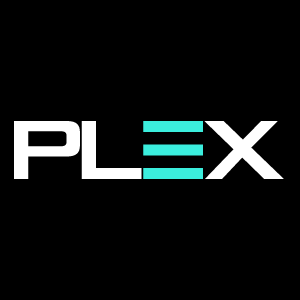Before we talk about consumption-based planning, here’s a cautionary tale. On dark, curvy roads during bad weather, warning signs and lights are critical in helping prevent accidents. If the signs are too close to the curve, momentum and slow response can spell disaster. But even the location of the sign can be a relative factor; with speed, vehicle weight, vehicle size, and experience of the driver all contributing to the ability to navigate safely past the danger ahead.
Handling supply chain planning often requires similar skills like those required to maneuver through curves and past upcoming danger. This is especially true in today’s uncertain business climate where disruptions can be sudden and severe. In these cases, demand volatility can impact supply chains and wreak havoc on inventory and service levels that ripple throughout all aspects of the enterprise.
Disadvantages of Consumption-Based Planning
Many companies use consumption-based planning to calculate requirements for their operation. This is a traditional method that has the advantage of being simple to calculate and easy to implement. In consumption-based planning, historical data is used to calculate future requirements.
Consumption-based planning is a push planning system. It may be manually adjusted based on forecasts or other inputs, but it’s totally reliant upon historical consumption data. And while it may work in some industries with very stable growth and demand curves, for today’s winding and unpredictable supply chain systems, consumption-based planning has several disadvantages:
- Consumption-based planning does not rely on demand– By using only historical data, re-order points are set to cover predictable growth. Adjustments may be manually calculated to account for other inputs, but the base calculations are founded on history.
- Consumption-based planning is extremely inventory intensive- To the extent that when consumption-based planning addresses demand, it is usually in the form of “safety stock”. Safety stock eliminates demand volatility in one direction by ensuring that there is an adequate supply of material to cover production in the case of sudden changes or shifts in the market. However, in cases where demand plummets, an excess of safety stock can drive up inventory and storage costs.
- Consumption-based planning is error-prone and less flexible– Data in consumption-based planning is not real-time. In addition to this, it may not be connected to a formal system, or if it is, it may only be connected with an MRP or ERP system that has little or no analytical capability and only captures transactional information to be analyzed and acted upon by human planners. Both mean that errors can be inherently based on flawed analysis and understanding, introducing less flexibility for change when the curve in the road suddenly looms ahead.
Impact of Consumption-Based Planning
During disruptive events, consumption-based planning can severely impact an operation. These impacts include:
- Reduced cash flow – By not reading demand properly, a sudden downturn can result in a buildup of inventory. This reduces cash-flow during the very time it’s needed the most and ties up valuable working capital.
- Increased holding costs – As inventory builds during down-cycles, associated holding costs rise. This is because warehouses must use additional labor or acquire more space to take in materials not currently needed which were ordered against historical consumption rates.
- Inadequate response to shifting lead times – Consumption-based planning can result in reduced service levels if lead times from suppliers shift and delay shipments which allow production rates to exceed safety stock levels. Also related to the disconnect between planning and demand, a failure by a supplier during periods of increased demand may mean stockouts or idled production capacity.
Demand Planning Based on Finished Goods
Consumption-based planning that is separate from demand inputs is like being back on that curvy road but minus the warning signs. The alternative is pull-based systems that utilize demand to plan the supply chain, meaning there will be little excess inventory to store. Pull systems reduce inventory and holding costs and free up cash flow as the cost of materials is only incurred for those with actual orders.
Demand-based planning using finished goods also leads to greater agility and flexibility in planning. As demand shifts are detected, the supply chain can be adjusted to account for disruption by reducing or increasing production to match the demand level. Because the supply chain planning system is designed around demand, the system is inherently more transparent and collaboration with suppliers is higher. This results in improved vendor relationships where targets and service levels are built into the negotiations, along with proper communication and feedback to address demand shifts.
Using Technology and Automation to Plan Using Demand
Today, software allows companies to move to a leaner, more agile, and flexible demand and supply planning system where demand acts as the trigger for the entire supply chain. By connecting the supply chain with cloud-based planning software such as that offered by DemandCaster, companies can reduce errors, adjust to shifting demand patterns and quickly respond to the danger signs to reduce cost and manage their operation. This software offers enhanced forecast accuracy based on near real-time information that accepts inputs from across the enterprise. Planners can quickly spot demand trends and patterns and forecast with more accuracy than before. By moving from historical-based to near real-time data, these systems apply advanced analytics and strong “what-if” scenario analysis to allow companies of any size to understand the warning signs and navigate the curves ahead.
Put an end to spreadsheet chaos, “gut feel” decision making and, departmental silos. Learn more about Agile Supply Chain Planning with DemandCaster.
Related Articles
